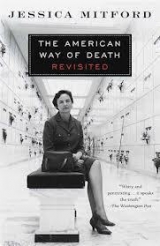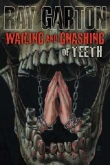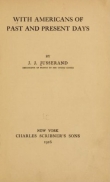
Текст книги "The American Way of Death Revisited"
Автор книги: Jessica Mitford
сообщить о нарушении
Текущая страница: 20 (всего у книги 23 страниц)
Tunley told the story of the Bay Area Funeral Society, describing its activities in these words: “San Franciscans have lately become witnesses to one of the most bizarre battles in the city’s history—a struggle to undermine the funeral directors, or ‘bier barons,’ and topple the high cost of dying.” He concluded that three choices confront the average citizen intent on making a simple, inexpensive exit from the world: “(1) You must make strict arrangements in advance for an austere funeral, a plan which may be upset by your survivors; or (2) You must join a co-operative enterprise like the Bay Area Funeral Society; or (3) You must will your body to some institution. If you do none of these things… the final journey will probably be the most expensive ride you’ve ever taken.”
Roul Tunley’s article, though milder in tone and less sharply critical of the undertakers than the one in Collier’s, represented—from the point of view of the industry—a far more potent threat, for it dealt with the kind of practical remedial action which people in any community could take. This put the cat among the pigeons. The “bizarre battle” was about to become positively outlandish.
Pandemonium broke loose in the industry, reflected in headlines which appeared in the trade press: SENTIMENT AND MEMORIALIZATION ARE IN GRAVE DANGER!; MISINFORMATION SPREAD AMONG FIFTEEN MILLION AMERICANS!; LORIMER WOULD DISOWN IT, OR WE’LL ALL HANG SEPARATELY!; and my favorite, in Mortuary Management, THEY CAN AFFORD TO DIE!
There was at first a strong tendency to panic. Casket & Sunnysideeditorialized:
There is little doubt that funeral service today, beset by powerful adversaries, will buckle under the strain unless there is united action in a common cause by all groups of funeral directors. If not, funeral service faces the danger of retrogressing to a point which we do not care to contemplate.
And the American Funeral Director:
Although articles critical of funeral practices have been published many times before in magazines and newspapers, there are aspects to this one which are especially disturbing…. The article is a persuasive sales talk for the memorial societies which today constitute one of the greatest threats to the American ideals of memorialization.
And the President of the NFDA:
…part of an organized move to abolish the American funeral program.
From the cacophony of angry voices, a number of distinct viewpoints could be discerned; differences of opinion emerged as to the essential nature of the threat.
The editor of Mortuary Managementwrote:
Offhand, it would appear that memorial societies have the one aim of reducing the price of funerals. As you study it, however, you begin to realize that it runs far deeper than price alone…. The leaders in these memorial society movements are not necessarily poor folk who cannot afford a standard funeral. Many of them are educated people. Many are both educated and of substantial means. Their objective is only partly to force lower funeral prices. Equally strong is the desire to change established customs. It can be focused on funerals today and on something else tomorrow. The promulgations of these outfits hint at Communism and its brother-in-arms, atheism.
The point that memorial society advocates are not only, or even perhaps primarily, interested in funeral costs was expanded by Mr. Sydney H. Heathwood, a public relations specialist in the funeral field, credited by the National Funeral Service Journalwith having, years ago, “originated and developed the ‘Memory Picture’ concept which was adopted by the Joint Business Conference and became familiar to the whole profession.” Mr. Heathwood saw “the continuing growth of clericalcriticism” as the fundamental problem facing the funeral men, and says that as a consequence of it, “the past few months have marked a gathering storm—more dangerous, I believe, in its potential harm to the whole profession than anything before it of the kind.”
What he found particularly devastating in the Postarticle was the words of Dr. Josiah Bartlett, Unitarian minister and one of the organizers of the Bay Area Funeral Society: “My people are in increasing rebellion against the pagan atmosphere of the modern funeral. It is not so much the cost as the morbid sentimentality of dwelling on the physical remains,” and “[The funeral societies] vowed to work together for simpler and more dignified funerals which are not a vain and wasteful expense and do not emphasize the mortal and material remains rather than the triumph of the human spirit.” Mr. Heathwood, in an analysis of the article, concludes: “The criticism of modern funerary refinements is not—in essence—against the costs, as such. Rather, the central part of all the criticism is against the actual goods and services which comprise the modern funeral service.” He dismisses as “woolly argument” the charges that “either the critical clergymen are hungry for the funeral director’s fees or their criticism shows that they are halfway communists or fellow-travelers.”
The National Funeral Service Journal, too, was concerned that the memorial societies might become trendsetters in funerary matters: “Unchecked in its early stages, this movement could spread to engulf much of the population, for current funeral customs are based largely on the herd instinct—the doing of a thing because all others do it and because it is the accepted thing to do.” And again: “The only thing that will change the custom is for people to become convinced that ‘it is the thing to do.’ This is what must be guarded against; this is what must be prevented.” And again:
The “average” funeral sale is representative of the lowest point or price at which a client can make a selection without feeling cheap in the eyes of relatives or friends. The current average sale… could easily be reduced considerably by the Memorial Society Movement, clergy criticism and other types of so-called reform. If others wear silk, you feel conspicuous in anything less costly; if others wear burlap, you would feel superior in gingham.
The cemeterians, watching from the sidelines, had some comments. Conceptstruck a discordant and unkind note:
While it is not necessary to be in agreement with the extremity of their protests, it seems significant that there are so many people who are protesting the costs of funeral services through these societies. Certainly there must be some reason for discontent and these people must feel that there is injustice in funeral prices. It is important that members of the cemetery industry realize this before rushing to the defense of the allied burial industries.
Turning the screw a notch, the writer adds, “The cemetery industry has found its answer to high cost through pre-arrangement.”
But has it? Another cemetery writer patiently spelled out for his more complacent colleagues an obvious difficulty for the cemeteries, arising from the tendency of memorial societies to encourage their members to donate their earthly remains to medical science:
What most assuredly results is that the remains are disposed of in a manner other than interment. Consequently, it is axiomatic that these organizations pose a threat to the tradition of earth interment with which our profession is concerned. Memorial associations, therefore, cannot be ignored. I have found, however, that many of my fellow cemeterians are not too concerned over their growth, believing that they may affect others, but never us.
The American Cemeteryagreed with this appraisal:
Although presently the focal point of their attack is funeral service, the philosophy of the movement is that current American funeral, burial and memorialization practices are largely pagan and wasteful; that they should be greatly simplified; and that regardless of a family’s wealth and social position, only modest expenditures should be made for such purposes. If this point of view were to generally prevail, as well it might if not effectively countered, the future of everyone in this field would most certainly be seriously jeopardized.
So did Mr. Frederick Llewellyn, executive vice president of Forest Lawn Memorial-Park, whose speech to the American Cemetery Association was reported in the American Cemetery:
In discussing this trend he mentioned funeral services with closed caskets and the “please omit flowers” movement. Although these now only directly affect funeral directors, he said, they will ultimately affect cemeterians as well. Even now, he said, there is a trend toward purchasing fewer large burial estates, less expensive memorials and fewer family mausoleums.
He urged that cemeterians join with funeral directors, florists, and others in the allied memorial fields in educating the general public, including clergymen and newspapermen, regarding the true meaning of memorialization, especially its religious significance.
The debate on how to handle the memorial society problem, what action to take, what stance to assume, reflected some basic differences of approach within the undertaking trade. Casket & Sunnysidecalled repeatedly for united action:
We firmly believe that there is one best way to meet this threat as well as to counter the mushrooming growth of the memorial societies and the actual or threatened religious encroachments on our concept of funeral service. That is through the efforts of a highly skilled public relations firm to conduct an extensive public relations program on a national basis. Thus, purely unselfishly on our part, we have called on all funeral service and trade organizations to join in this common endeavor.
Mortuary Managementadvised lying low and saying little:
We think a serious mistake has been made in parading around over the nation the figures of NFDA’s economist, Eugene F. Foran. His average adult funeral service charge has been used for the purpose of telling the public that funerals are not too high. It is fine for the funeral director to possess this information for study but it is dangerous to spread it before the public…. Don’t make the mistake of engaging in public arguments with memorial society representatives on television or radio to defend the present day American funeral program. That’s like shooting craps with the other fellow’s dice.
To the extreme annoyance of NFDA officials, the Postarticle was seized on by insurgents within the industry who had found price advertising and solicitation of prearranged funerals to be profitable. In defiance of NFDA, some of these rushed into print with advertisements substantially agreeing with the Postarticle, offering “dignified funerals” at low costs and prearrangement programs. “Enemies from within!” cried the NFDA leadership, and a convention speaker, flourishing one of the advertisements, said, “The ad says that prearranging a funeral protects the family against sentimental overspending. Yes, there are funeral directors who go further than the most critical writers when they tell the world through their ads and brochures that the family must be protected against itself during the emotionally difficult funeral period.”
The NFDA’s line was essentially to hold fast, to refuse to have anything to do with the memorial societies, and above all to maintain price levels based on the Foran concept of “overhead per case.” There are others who saw it differently. Mr. Wilber Krieger of National Selected Morticians, while yielding to none in his opposition to the funeral societies, thought that the industry had brought this development on itself by its lack of flexibility in “serving people as they wish to be served” and by its failure to meet a growing demand for prearranged and prefinanced funerals. In an address to the selected ones, he said, “Please don’t go out and start shouting before the world, ‘My cost per funeral is XXX dollars.’ Who cares? More funeral directors do more damage in the public mind by talking all the time about this cost-per-funeral fallacy. Who cares about your costs?… I am greatly disturbed at what I am seeing across the country….”
If the funeral industry was astir over the Postarticle, no less so were the funeral societies—and particularly the Bay Area Funeral Society. The board members had naturally been pleased that the society was to be the subject of a national magazine article, and had expected there would be some response from readers. But they were completely unprepared for what followed. The headquarters of the society, consisting of a desk and telephone in the building of the Berkeley Consumers Cooperative, was inundated with letters which poured in at the rate of a thousand a week. Volunteer crews were hastily assembled to help with the huge job of answering the letters and processing applications for membership. The editor of The Saturday Evening Postreported an equally astonishing flood of letters to the magazine. He commented, “The article seems to have touched a sensitive nerve.” The three members of the Bay Area Society who were mentioned by name in the Post, Dr. Josiah Bartlett, Professor Griswold Morley, and I, received several hundred letters apiece within the first few weeks; more than a year later, letters were still arriving, sometimes apologetically prefaced, “I only just read ‘Can You Afford to Die?’ in an old copy of the Postat my barber’s….”
Even more surprising than the quantity of letters was their quality. Those who are by the nature of their work on the receiving end of letters from the general public—newspaper editors, radio commentators and the like—have told me that a good percentage of the letter writers are crackpots of some kind, that all too seldom does the solid citizen trouble himself to set down his views on paper. The opposite was true of these letters. In tone, they ran the gamut, some bitter, some funny, some reflective; but they were almost without exception intelligent—in many cases deeply thought out—comments on a subject about which the writers obviously felt most strongly. They were indeed evidence of a widespread public revulsion against modern funerary practices, the extent of which even the funeral society advocates had never fully realized. Another extraordinary thing about the hundreds of letters I received was that only one took the side of the funeral industry. It was full of invective, it bore no name, it was signed simply “An American Funeral Director.” The Bay Area Funeral Society reported but three hostile letters out of the first eleven hundred.
Some of our correspondents had long since taken matters into their own hands. It seems that a variety of ingenious solutions to the problem were being tried. We learned of the “plain coffin” offered by the St. Leo Shop in Newport, Rhode Island: “For those who would not like to be caught dead in a plush-lined coffin, we offer the traditional plain box of pine, cedar or mahogany, with strong rope handles. Covered with cushions, it doubles as a storage chest and low seat, until needed for its ultimate purpose.” And we learned of “the world’s first do-it-yourself tombstone kit” offered by a South African inventor—“selling for a sum that is expected to shock traditional monument makers, whose prices generally start at ten times this figure.”
We learned of two burial committees connected with Friends Meetings, one in Ohio, the other in Burnsville, North Carolina. When a member dies, the committee supplies a plain plywood box, places the body in it, and delivers it by station wagon to the crematory or medical school. The next of kin pays for the cost of the lumber in the box plus crematory charges and obituary notices. There is no charge for the committee’s services, which include making the box. The total expense is generally under $250. The committee arranges for “help with the children or with food, a lift with the housework, hospitality for visiting relatives—a rallying of friends in a quiet coordinated way.” A memorial service is generally held three or four days after death.
In the wake of the Postarticle, several other publications took up the subject of disposal of the dead, evoking in each instance spirited response from the funeral industry. The Reader’s Digestof August 1961 ran an article, “Let the Dead Teach the Living,” which pointed to a critical shortage of cadavers for anatomical study in medical schools. Said the Reader’s Digest, “Every individual who bequeaths his remains to a medical school makes an important contribution to the advance of human knowledge.”
Medical Economics, a national physicians’ journal, carried a piece describing the participation of doctors in the funeral society movement. A Kentucky pediatrician is quoted as saying, “We should encourage people to use educational, health, or welfare funds as a memorial to the dead rather than throw a lot of money into a barbaric funeral ceremony complete with gussied-up bodies, expensive caskets, parades, and regalia.” Said Mr. Howard C. Raether in a speech delivered to the NFDA convention: “The ultimate of all these programs is to give the entire body to medical science. With no body there is no funeral. If there are no funerals, there are no funeral directors. A word to the wise should be sufficient.” Said the National Funeral Service Journal, “This is a practice that cannot openly be opposed without branding the funeral directors as being indifferent to the health and welfare of mankind…. The loss of a casket sale will create a financial blow in those cases where the body is contributed to a medical school. Fortunately, such cases are infrequent at the present time; unfortunately, they may become more frequent in the future.”
After Words
Now again the funeral folk are gazing hopefully into a clouded crystal ball. By 1996 more bodies, not fewer, were being donated for medical research, leading those in the trade once more to spread untruths. Thomas Lynch, a Michigan undertaker, wrote in The Undertaking: Life Studies from the Dismal Trade(Norton, 1997): “The supply of cadavers for medical and dental schools in this land of plenty [has been] shamefully but abundantly provided for by the homeless and helpless, who were, for the most part, more ‘fit’ than Russ.” Russ—after being discouraged from body donation—fit quite nicely in one of Mr. Lynch’s caskets, the author was pleased to report. A quick check with the three medical schools in Michigan indicated that Wayne State and the University of Michigan at Ann Arbor have an “urgent need” for body donors; Michigan State University has a moderate need: “We can always use people.”
Once the FTC Funeral Rule was passed in 1984, publicity and protest quieted down. Cremation was more readily obtained, and prices were available over the phone. The spirit of social activism that spurred the memorial societies lost its steam, and membership began to dwindle. In some areas, societies died out altogether. In other areas—where a favorable price had been negotiated with cooperating mortuaries—they flourished quietly.
News stories popped up occasionally when a cemetery or funeral establishment went out of business, the proprietor having absconded with the funds. Lisa Carlson’s Caring for Your Own Dead—a state-by-state manual for those living in one of the forty-two states where it is legal to bypass the funeral industry entirely—was published by a small press and garnered good reviews, but it was not readily available in bookstores. The funeral industry continued to thrive with relatively little attention.
When the Funeral Rule was reopened for amendments in 1988, the media ignored the hearings. No one was there to hear the stories of continued consumer abuse at the hands of an industry that ignored the rule. No one was there to hear the pleas for bringing cemeteries under the rule. All seemed well for the industry.
But in the eighties—with AIDS deaths a near epidemic—a much younger generation was becoming involved with the final arrangements, and many didn’t like what they found.
One of those was Karen Leonard. Her first foray into the realm of death care was as co-owner of a casket-and-urn “gallery” in San Francisco—Ghia—where one could purchase a work of art for the final resting place. Carlson thought that if people were going to purchase their own caskets, they might want a do-it-yourself guide for the rest of the funeral, and rushed off a carton of Caringfor Ghia to display.
The gallery struggled and only a few books sold, but Leonard found herself surrounded by people with “new” ideas for the dying. Without exception, each had “horror stories” of unpleasant funeral experiences and were looking for more meaningful ways of “celebrating” a life once lived. It wasn’t long before Leonard was introduced to the memorial society folks and began her funeral education in earnest.
Carlson began passing along the occasional media inquiry to Leonard. One was from a producer for “20/20.” Undercover and with hidden camera, she was able to provide television audiences with a clear look at some of the less-than-ethical practices of the funeral trade.
The industry cried foul, saying that the portrayals were isolated incidents, but it was clearly stung.
The press began to take notice. In 1996 the magazine of the American Association of Retired Persons (AARP), Modern Maturity—which had avoided anything “downbeat” for years—finally ran a story on funeral planning. Kiplinger’s Personal Financeand Money Magazinefollowed suit the next year.
The mood in the Dismal Trade grew nervous. The NFDA opened a Washington, D.C., office where its liaison spends time trotting around Capitol Hill—to win friends and influence people, in preparation for a possible reopening of the Funeral Rule.
A June 1997 editorial in The Directormight have been written thirty-five years ago but for its let’s-all-buck-up tone; President Maurice Newnam offers this fatherly counsel: “The importance of the memory picture created by the properly embalmed and restored loved one is something we must never lose sight of and never be ashamed to ask permission to do…. Hold your head high, take care in the work you do and be proud to be an embalmer.”
Ron Hast ( Mortuary Management, February 1997) is more candid: “Think about how the public must perceive funeral service as we caress our solid copper caskets, and extol the virtues of embalming and extended preservation. Our critics are gaining attention, and more and more client families come to us with skepticism. In fact, some clients seeking death care service don’t come to us at all.”




![Книга Make Winning a Habit [с таблицами] автора Rick Page](http://itexts.net/files/books/110/no-cover.jpg)



